Ælfgif-who? provides short biographies of early medieval English women. Click on the podcast player if you’d like to hear this newsletter read aloud in my appealing Yorkshire accent.
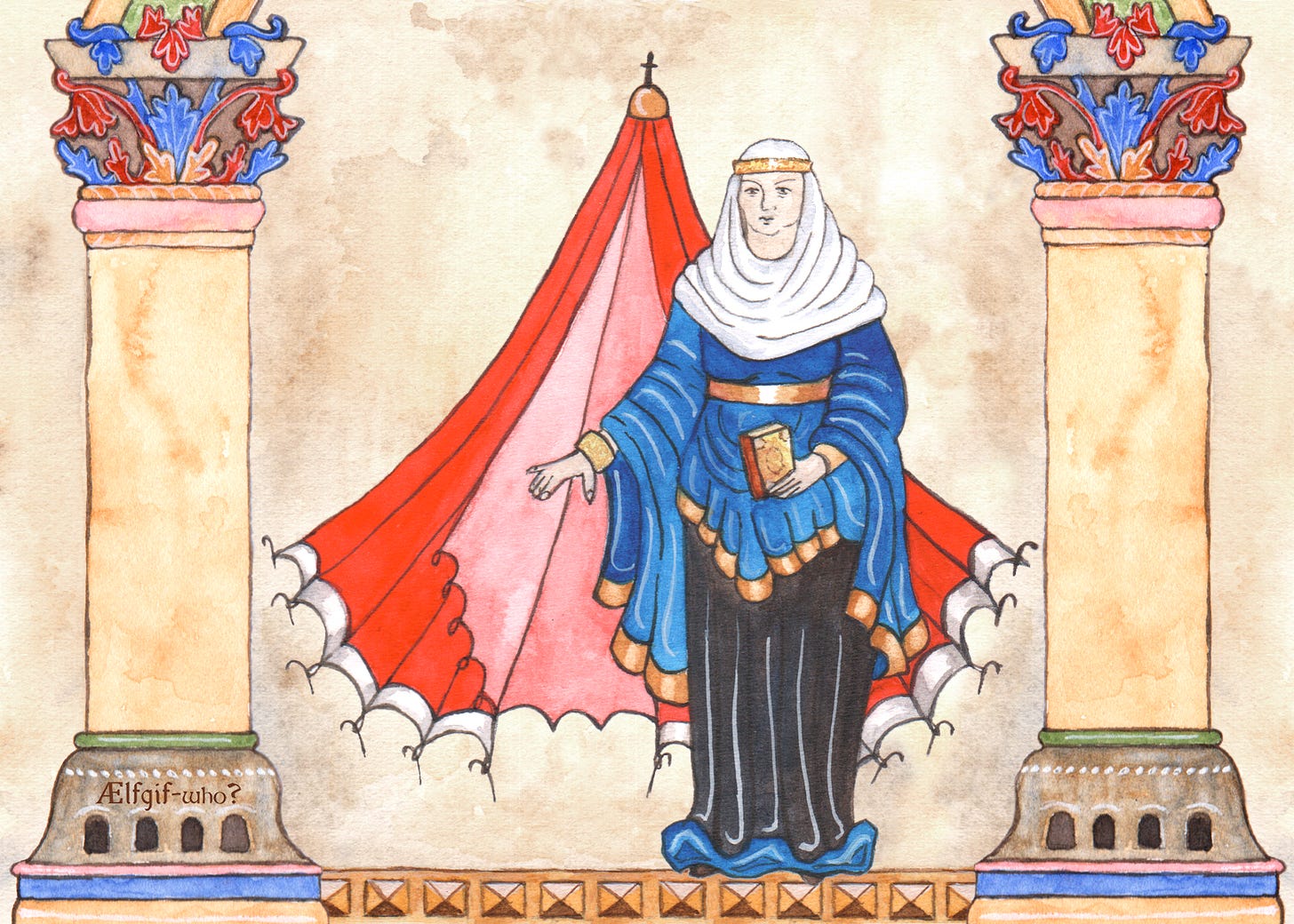
Wynflaed: A Whole Life Recorded on One Piece of Parchment
In the archives of the British Library is a single sheet of parchment. On this eleventh-century parchment is a copy of a will, composed a century earlier, and recorded in Old English. It records all the possessions of a woman named Wynflaed. This document is about half a metre wide, and creases indicate that it has been folded several times. A prominent tear lies down one of these creases. This copy of the original will was probably made by an interested party to record the transition of lands between hands, and the legal document that results is the only written record we have of Wynflaed’s life - a whole human existence captured in ink on animal skin. This list of possessions is rather a lot more than we have for most women of the early tenth century, and gives us a well-rounded picture of who she was and what kind of social position she occupied.
The will begins ‘Wynflaed declares how she wishes to dispose of what she possesses, after her death.’ It was drawn up in the 940s. Wynflaed probably went to a local churchman to have it recorded, somewhere in the south west of England. The will indicates that she was a very wealthy woman - a landowner, with seven estates in Hampshire, Dorset, Somerset and Wiltshire. We don’t know at what age she decided to draw up her will, but it’s clear from the list of beneficiaries that she was already a widow and a grandmother. She has both children and grandchildren to whom she bequeaths her possessions, but clearly no living husband. It’s feasible to imagine that Wynflaed had this will drawn up soon after a change of circumstances like the death of her husband, from whom she may have inherited land.
At least one of her estates was granted to her by her husband upon her marriage - the will calls her estate at Faccombe a ‘morning-gift’ (marriage gift). The manor that existed at Faccombe in Wynflaed’s lifetime was excavated by archaeologists in the 1970s and 80s, and so we can get a sense of how Wynflaed lived on her estate there. The farmhouse was large - 45 feet by 25, with stables attached in which to keep her animals (the will mentions both tamed and untamed horses, oxen, and cattle) as well as workshops and kitchens. That this was possibly one of seven such properties brings her wealth into perspective. Her will also includes a ‘red tent’, which she would have slept in while travelling around southern England to her various estates.
Wynflaed’s will does not only deal in land and material possessions, but also in people. Wynflaed owned a large number of enslaved people, who would have worked for her on her estates. Although Wynflaed’s will is perhaps unusual in its detail and naming of individual enslaved people, that they are bequeathed is not at all uncommon. The early medieval economy was reliant on slave labour, with perhaps 30% of the population being enslaved, and landowners such as Wynflaed and her family were wealthy because of the work of the people they have enslaved. The will makes it clear that Wynflaed primarily owned people that she herself has enslaved as punishment (indicated by the word witeþeowas) revealing her powerful position as someone who could legally condemn others to slavery. Wynflaed’s slaves are both men and women, some with very specific skills: a weaver, a seamstress and a cook.
Wynflaed gives specific enslaved people to specific recipients, in one instance even splitting up a family unit to do so. That some of the enslaved people in her will have children who she also has power over indicates that slavery was a hereditary social status. Wynflaed does not only bequeath the enslaved people in her will, but she also frees many of them. The will reads:
Wulfflaed is to be freed on condition that she serve Æthelflaed and Eadgifu. And she bequeathes to Eadgifu a woman-weaver and a seamstress, the one called Eadgifu, the other called Æthelgifu. And Gerburg is to be freed, and Miscin […] and the daughter of Burhulf at Chinnock, and Ælfsige and his wife and elder daughter, and Ceolstan's wife. And at Charlton, Pifus and Eadwyn […] are to be freed. And at Faccombe Eadhelm and Man and Johanna and Sprow and his wife […] and Gersand and Snel are to be freed. And at Coleshill Æthelgyth and Bica's wife and Æffa and Beda and Gurhann's wife are to be freed; and Wulfwaru's sister, Brihtsige's wife, and […] the wright, and Wulfgyth, Ælfswith's daughter are to be freed. And if there be any penally enslaved man besides these whom she has enslaved, she trusts to her children that they will release him for her soul's sake.
The key phrase here is ‘for her soul’s sake’. Wynflaed, who wished to hold these people enslaved while she was alive, wanted them to be freed only afterwards, as an act of piety. While some might interpret Wynflaed’s act of freeing these people as charitable or moral, this ‘moral’ act only applied to some of her slaves, and was delayed until after she died. Another interpretation is that even in death, Wynflaed wanted to continue to use these people: after their labour is no longer useful to her, she exchanges them for redemption.
Piety is a prevalent theme in Wynflaed’s will. She gives her estate at Chinnock to the nunnery at Shaftesbury and also many of her belongings, including offering-cloths, her cross, and two silver cups. She gives a gold coin to every nun there, and one more each to three women, Ceolthryth, Elsa, an Æthelswith, presumably nuns at Shaftesbury. She also has a substantial wardrobe of clothes, some of which she bequeaths to the nuns:
And she grants to Ceolthryth whichever she prefers of her black tunics and her best holy veil and her best headband; and to Æthelflaed the white gown and cap and headband, and afterwards Æthelflaed is to supply from her nun's vestments the best she can for Wulfflad and Æthelgifu and supplement it with gold so that each of them shall have at least sixty pennyworth: and for Ceolwyn and Eadburg it shall be thirty pennyworth. And there are two large chests and a clothes chest, and a little spinning box and two old chests.
That she owned nun’s vestments indicates she may have been associated with the community at Shafesbury, though it is unlikely she was consecrated a nun herself while she has ownership over such estates, possessions and enslaved people.
Though Wynflaed’s will shows her to be concerned with her soul, her clothing and other luxurious possessions reveal that she was certainly no ascetic. As well as the gowns and veils and headbands she also bequeaths a ‘twilibrocenan’ gown, which has been translated as ‘double badger skin’, from the Old English word for badger ‘broc’, but it is more likely that it refer to a style of embroidery that uses two contrasting colours. She also bequeaths an engraved bracelet and a brooch to her daughter, as well as a filigree brooch to a woman named Eadgifu. Her will rounds off with all the things that her daughter should inherit but are too small to mention:
Then she makes a gift to Æthelflaed of everything which is unbequeathed, books and such small things, and she trusts that she will be mindful of her soul. And there are also tapestries, one which is suitable for her, and the smallest she can give to her women. […] And to Æthelflaed she grants her […] the utensils and all the useful things.
The mention of books, which would have been luxury items in this period, indicate that Wynflaed and her daughter Æthelflaed may have been literate - it is frustrating that the contents of these books are not specified, but we might image them to be psalters.
There have been some attempts to identify Wynflaed and link her with other known individuals. She has been associated with King Edgar’s grandmother Wynflaed, who can also be linked to Shaftesbury, though nothing in her will indicates this connection. Her identity and family connections may never been known in any more detail. Ultimately, we have a much greater understanding of who she was and what kind of life she lived from her will than from any reconstructed family tree. Rather than trying to link her with royalty, I think it’s more interesting to focus on what her will tells us about every day life in this period. And as well as painting a well-rounded picture of Wynflaed’s life, it also allows us glances towards the lives of the people she enslaved, which we otherwise never get to see. We know their names, something of their family structures, and in some cases their occupations and skills. Finally, I must point out that every royal or landowning woman in this newsletter owned and exploited slave labour - of that I have no doubt. Wynflaed is only different because her will records their names for posterity.
Further Reading (and Listening!):
Wealthy Wynflaed’s Wonderful Will by Kate H Thomas (For the Wynn Blog)
Wynflaed’s Will (British Library)
Of Pots and Pins: The Households of Late Anglo-Saxon Faccombe Netherton by Katherine Weikert
Full text of the will (Electronic Sawyer) S 1539
Michael Wood, ‘Anglo-Saxon Portraits’: Wynflaed (BBC Radio 3)





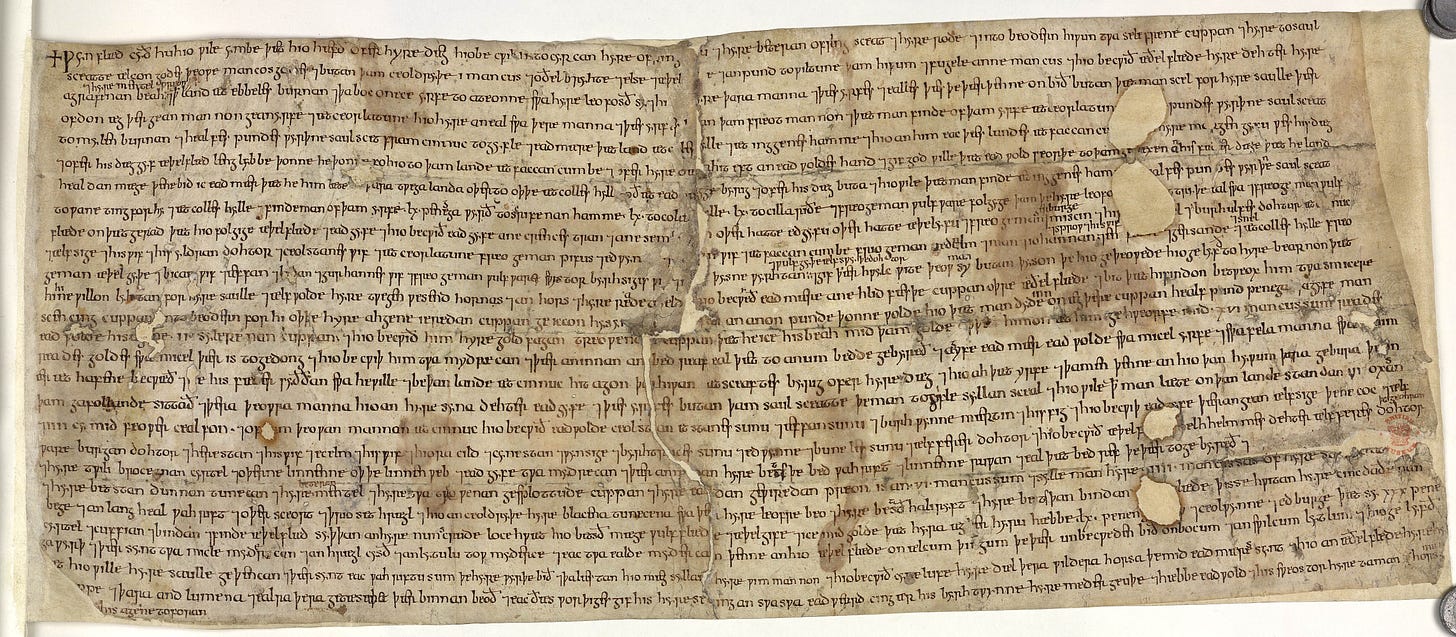

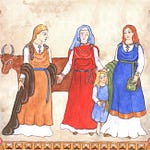
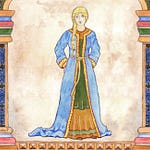
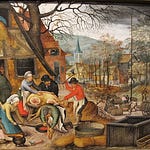
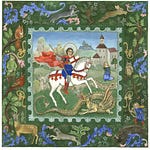



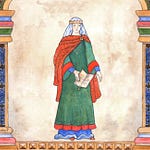
Share this post